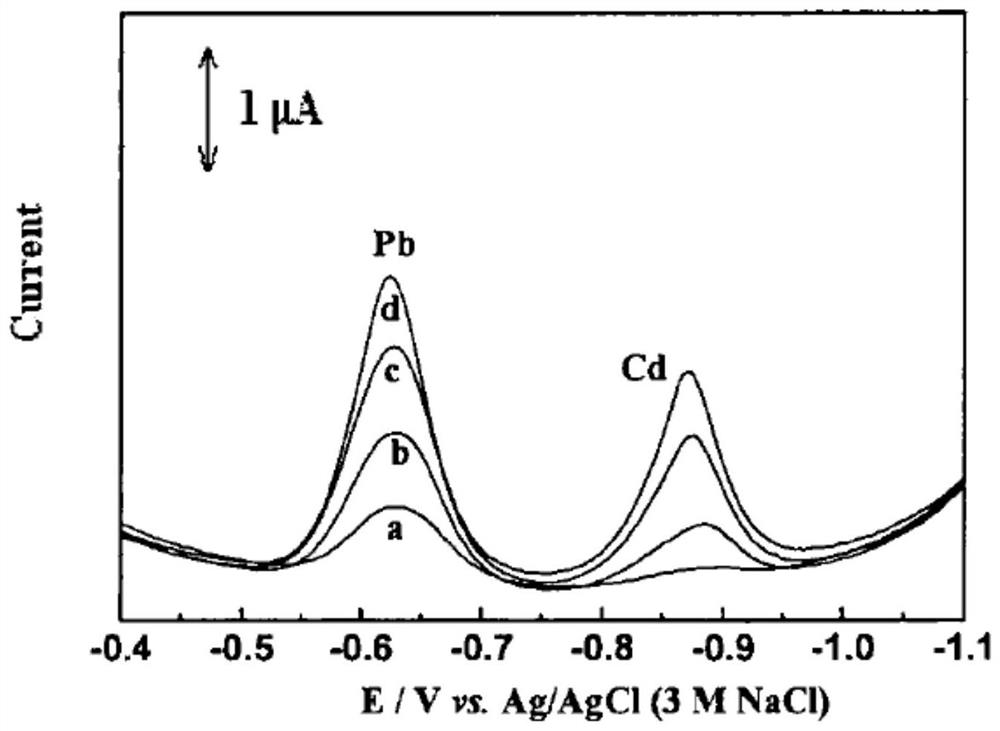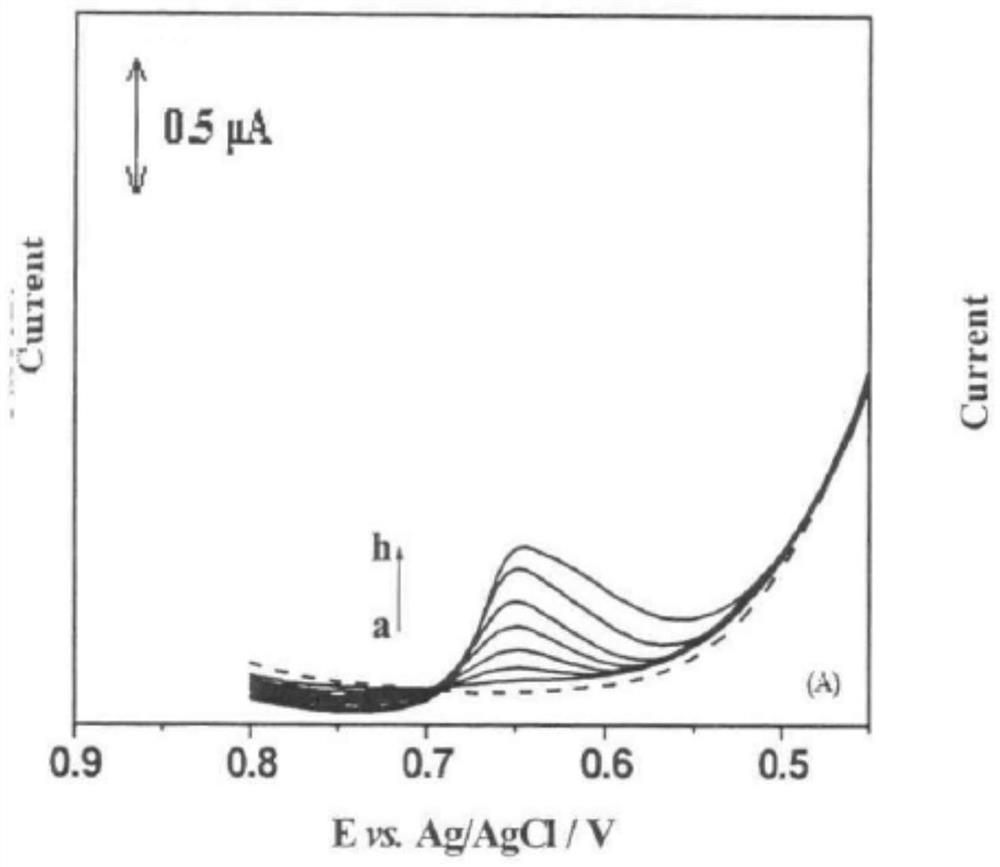Method for detecting heavy metals in aquatic product dried food
A detection method and heavy metal technology, applied in the preparation of test samples, measuring devices, instruments, etc., can solve the problems of high test cost, expensive equipment, low sensitivity, etc., and achieve good application prospects
- Summary
- Abstract
- Description
- Claims
- Application Information
AI Technical Summary
Problems solved by technology
Method used
Image
Examples
Embodiment
[0049] This embodiment aims to clarify the detection method about heavy metals in aquatic product dry food that the present invention designs, and all chemicals used in the present embodiment are analytical pure; All glass instruments are all soaked 24h with 10% concentrated nitric acid, and with Rinse with deionized water repeatedly and then dry it; the dried aquatic products used are dried carp purchased in the market; the specific detection method is as follows:
[0050] 1. Sample pretreatment
[0051] Wash and infiltrate the dried carp with deionized water; then remove the head, tail and bone spurs; grind and homogenize the processed samples respectively, place them in sample cups, and store them at -20°C after numbering.
[0052] 2. Digestion treatment
[0053] 21. Pretreatment for Pb and Cd determination
[0054] Weigh 0.4g of dried carp after pretreatment and place it in a digestion tank, add 5mL of MOS grade nitric acid, heat at a constant temperature of 145°C, and add...
experiment example 1
[0074] Experimental example 1 is based on the method used in the above application example, and aims to clarify the use of graphene / Bi / Nafion composite materials as electrodes, and the use of anodic stripping voltammetry to detect traces of heavy metals Pb and Cd in dried aquatic products. quantity.
[0075] Put 5 mL of the digestion solution prepared in steps 31, 32, and 33 of the above-mentioned embodiment into the electrochemical detection cell, and perform quantitative analysis by the standard addition method.
[0076] figure 1 The stripping voltammogram of Pb and Cd in aquatic products was detected for graphene / Bi / Nafion composite material as an electrode. From figure 1 It can be seen that the dissolution peaks of Pb and Cd appear at -0.63V and -0.89V. Adding 2μg / L of Pb and Ca as a standard will increase the peak current significantly, and accurately detect the traces of Pb and Cd in aquatic products. Through calculation, the contents of Pb and Cd in the aquatic prod...
experiment example 2
[0080] Experimental Example 2 is based on the method used in the above application examples, and aims to clarify the use of Au / graphene composite materials as electrodes to detect traces of heavy metals Pb and Cd in dried aquatic products using anodic stripping voltammetry.
[0081] In this experiment, the Au / graphene composite electrode was applied to detect trace Hg by voltammetry. The linear range of Hg is as figure 2 shown, for 5x10 -10 ~5x10 -9 mol / L.
[0082] From figure 2 It can be seen that at low concentrations, the Au / graphene composite electrode has an excellent electrochemical response to Hg, and the stripping peak current has a good linear relationship with the mercury concentration, and the correlation coefficients are 0.9975 and 0.9980, respectively. That is, the lower the mercury concentration, the higher the sensitivity. Au / graphene composite electrode has a detection limit of 3x10 for Hg -10 mo / L (0.06ug / L).
[0083] The reason why the Au / graphene co...
PUM
 Login to View More
Login to View More Abstract
Description
Claims
Application Information
 Login to View More
Login to View More - R&D
- Intellectual Property
- Life Sciences
- Materials
- Tech Scout
- Unparalleled Data Quality
- Higher Quality Content
- 60% Fewer Hallucinations
Browse by: Latest US Patents, China's latest patents, Technical Efficacy Thesaurus, Application Domain, Technology Topic, Popular Technical Reports.
© 2025 PatSnap. All rights reserved.Legal|Privacy policy|Modern Slavery Act Transparency Statement|Sitemap|About US| Contact US: help@patsnap.com


